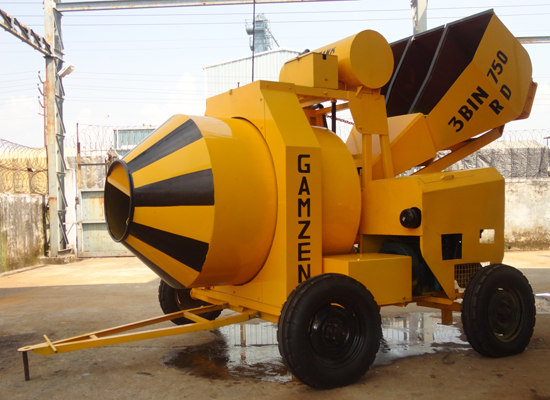Concrete batching plants play a crucial role in the construction industry as they are responsible for producing concrete, a vital material used in various applications. In this article, I will provide an overview of concrete batching plants, discuss the different types of plants, and explore their applications.
Overview of Concrete Batching Plants
A concrete plant, also known as a batch plant or batching plant, is a facility that combines various ingredients to form concrete. These ingredients include water, air, admixtures, sand, aggregate (rocks, gravel), fly ash, silica fume, slag, and cement. Concrete plants consist of several parts and accessories, such as mixers, cement batchers, aggregate batchers, conveyors, stackers, aggregate bins, cement bins, heaters, chillers, cement silos, batch plant controls, and dust collectors.
The heart of a concrete batching plant is the mixer, which ensures the even mixture of concrete. There are different types of mixers available, including tilt drum, pan, planetary, single shaft, and twin shaft mixers. The twin shaft mixer, in particular, uses high horsepower motors to ensure an even mixture, while the tilt mixer offers a comparatively large batch of concrete mix. The choice of mixer type varies depending on the region and specific requirements.
Types of Concrete Plants
Concrete plants can be classified into different types based on the presence of a central mixer and their mobility. The two main categories are dry mix plants and wet mixing plants.
Dry Mix Concrete Plant
A dry mix concrete plant, also known as a transit mix plant, weighs sand, gravel, and cement in weigh batchers via digital or manual scales. All the ingredients are then discharged into a chute, which leads to a truck. Simultaneously, water is either weighed or volumetrically metered and discharged into the mixer truck through the same charging chute. The ingredients are mixed during transportation to the construction site.
Wet Mix Concrete Plant
A wet mix concrete plant combines all the ingredients, including water, at a central location into a concrete mixer. The concrete is mixed at a single point and then agitated on the way to the construction site to prevent setting. Wet mix plants typically have a central mixer that offers a more consistent mixture in a shorter time. They are commonly used when higher production rates are required.
Mobile Concrete Plant
A mobile batch plant, also known as a portable concrete plant, is a highly productive and flexible piece of equipment used for batching concrete. It allows users to produce concrete at almost any location and then move to another location for batching. Mobile plants are the preferred choice for temporary projects or situations where the equipment height is a factor or the required production rate is lower.
Stationary Concrete Plant
A stationary concrete plant is designed to produce high-quality concrete consistently. These plants have larger output capacities, higher efficiency, and greater stability compared to mobile plants. Stationary concrete batching plants are widely used in various projects, including roads, bridges, ports, tunnels, dams, and buildings.
Application of Concrete Plants
Concrete plants are used in several applications, including ready mix, civil infrastructure, and precast projects.
Ready Mix
The ready mix concrete (RMC) market is growing rapidly worldwide. Ready mix concrete plants are generally located inside cities and transport ready-mixed concrete to construction projects using concrete truck mixers. These plants have higher requirements for durability, reliability, safety, and environmental protection compared to other types of plants.
Precast Applications
Precast concrete, also known as PC component, is a standardized concrete product manufactured in a factory. It offers advantages over cast-in-place concrete, such as safer construction, lower costs, and high-quality products. Precast and prestressed concrete producers supply critical elements used in infrastructure projects like buildings, bridges, parking decks, road surfaces, and retaining walls.
Essential Components of Concrete Plants
Concrete plants comprise various components that work together to produce concrete efficiently and effectively. Some of the essential components are discussed below.
Mixers and Silos
Mixers are the heart of concrete batching plants and ensure an even mixture of ingredients. They are available in different types, such as tilt drum, pan, planetary, single shaft, and twin shaft mixers. Silos, on the other hand, are used to store bulk cement, fly ash, mineral powder, and other materials used in the production of concrete.
Aggregate Batcher and Cement Silos
The aggregate batcher, also known as aggregate bins, is used for storage and batching of sand, gravel, and crushed stone. It measures the aggregate by weighing or using a weighing belt. Cement silos, on the other hand, store bulk cement and other materials. They can be found in different types, including bolted cement silos, horizontal cement silos, and integrated cement silos.
Control Systems and Screw Conveyors
Concrete plants utilize control systems to regulate their operation. Computer-aided control systems help in fast and accurate measurement of input ingredients. They often use digital scales for cementitious materials and aggregates and moisture probes to measure aggregate water content. These systems ensure the concrete meets the desired specifications.
Screw conveyors are used to transfer materials from cement silos to the powder weighing hopper. They play a crucial role in the smooth operation of concrete plants by ensuring a continuous flow of materials.
Environmental Impact and Regulation of Concrete Plants
Concrete plants have implications on the environment, and regulations are in place to mitigate their impact. In Texas, concrete, aggregate, and cement industries generate billions of dollars in annual revenues and provide employment opportunities to thousands of Texans.
However, concerns about pollution, traffic congestion, and water runoff exist.
Concrete batch plants can generate particulate matter (such as dust) during their operation. To minimize this, regulations set limits on the emission of particulate matter from the facility.
Furthermore, central dust collectors are often used to contain dust pollution. Water runoff from concrete plants is also a concern for many municipalities, and efforts are made to manage and reuse water effectively.
Regulation and Permitting of Concrete Plants in Texas
Concrete plants in Texas are governed by laws and guidelines for their development and operation. The state has processes in place to ensure citizen participation in permitting hearings. These regulations aim to strike a balance between the economic benefits of the concrete industry and the need to protect the environment and communities.
FAQs
What are the benefits of investing in a concrete batching plant?
Investing in a concrete batching plant offers several benefits. It allows for greater control over the quality of concrete produced, ensures a steady supply of concrete for construction projects, reduces reliance on external suppliers, and increases overall efficiency and productivity.
What factors should be considered when selecting a location for a concrete batching plant?
Several factors should be considered when selecting a location for a concrete batching plant. These include proximity to construction sites, availability of raw materials, access to transportation routes, local regulations and zoning restrictions, and environmental considerations.
What are the essential permits and regulations required for setting up a concrete batching plant?
Setting up a concrete batching plant requires obtaining the necessary permits and complying with regulations. These may include environmental permits, zoning approvals, construction permits, and compliance with air and water quality regulations. It is essential to consult with local authorities and regulatory bodies to ensure compliance with all requirements.
How can technology and automation enhance the efficiency of a concrete batching plant?
Technology and automation play a crucial role in enhancing the efficiency of concrete batching plants. They enable better monitoring and control of plant operations, accurate measurement of ingredients, real-time data analysis, remote access and control, and the use of advanced software systems for optimization. This results in increased productivity, improved quality control, and reduced wastage.
In conclusion, concrete batching plants are essential for the construction industry, providing a reliable and efficient supply of concrete. Understanding their different types, components, applications, and environmental considerations is crucial for ensuring their successful operation while minimizing their impact on the environment and communities.

